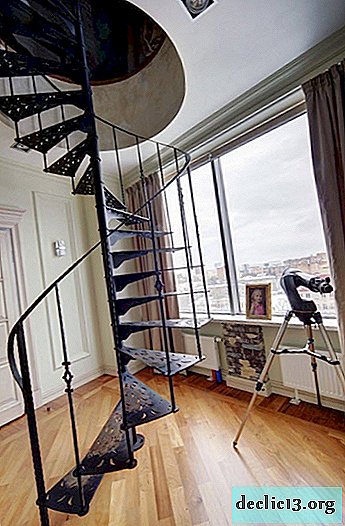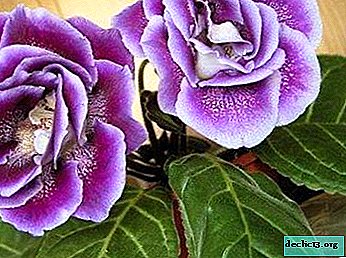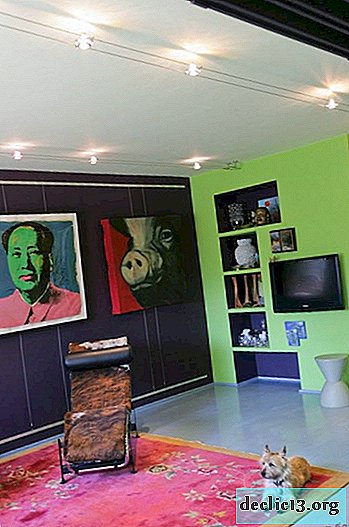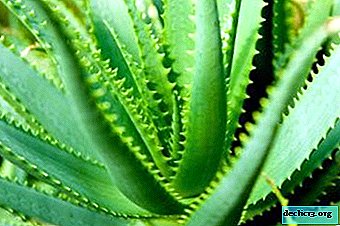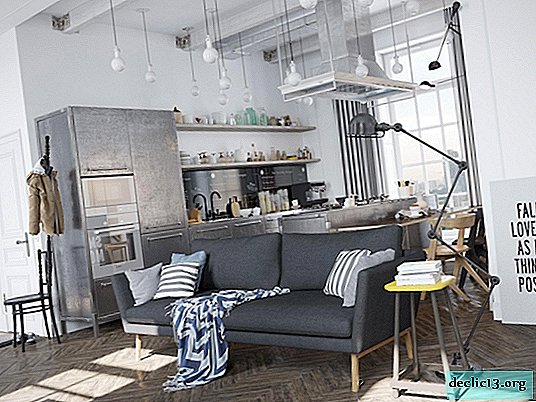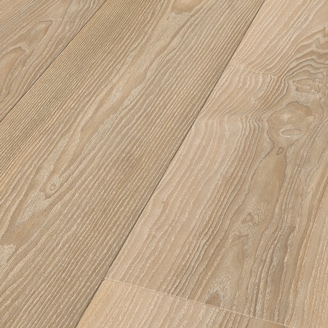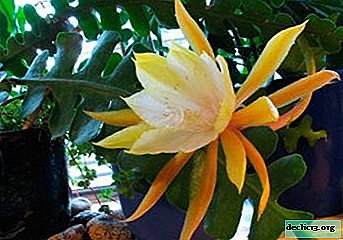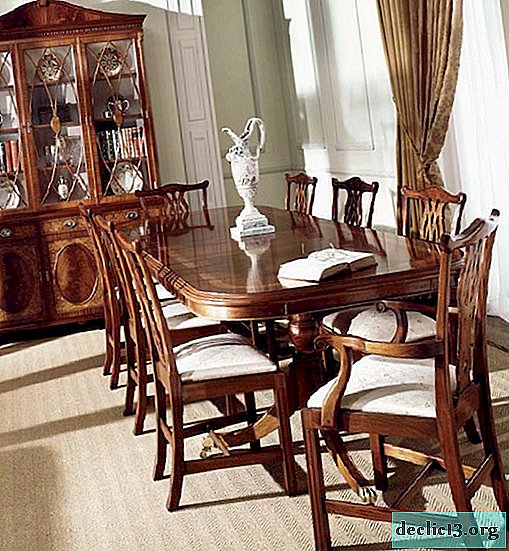Flower "Family happiness", or Anthurium red. Types of plants, especially home care
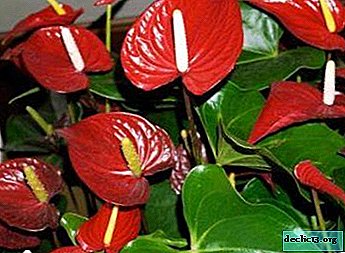
Today, anthurium red is very popular. This flower will become a full-fledged decorative addition to the interior.
With proper care, you can enjoy its beauty all year round. From the article you will learn everything you need about this plant.
We will tell you how to properly care for this beautiful home flower so that it delights with its flowering on the windowsill of the house, and about what diseases and pests can affect the flower.
Botanical Description of Family Happiness
Anthurium red, the Latin name Anthúrium is a representative of the aroid family. The plant is found in South and Central America, Colombia and Ecuador.
The first appearance of this flower was described by a scientist from Belgium, J. Linden, who gave it a name in honor of the French naturalist Eduard Andre. The plant came to Russia in 1886.People call it:
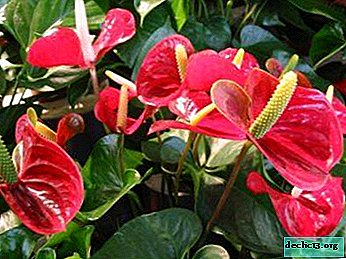 artist's palette;
artist's palette;- flamingo flower;
- pig tail;
- damn language;
- male happiness.
Anturim red is considered a flower of family happiness, as it creates harmony and stability in relationships. They call him a symbol of male happiness because they consider him able to attract male energy to the home of unmarried women. With the manifestation of male power, the petals in the form of a heart are compared with a tail sticking out in the middle.
This fast-growing perennial plant has stiff petiole leaves. The surface is:
- matte;
- glossy;
- leathery.
The edges of the leaves are lobed or whole. Small flowers are collected in inflorescences, the base of which is decorated with a bractal bedspread of various sizes. The flower has a curious feature - the leaves turn behind the sun.
Can I keep him at home?
Anthurium red should be placed high in the house so that children and animals do not get it. The point is in the poisonous substances contained in the leaves, which, if not tried, are not dangerous. Otherwise, they can cause mucosal irritation.
People who are allergic to odors should choose a non-smelling look. Roots can also cause allergies.There is no more danger from anthurium, there is only benefit, since the plant:
- absorbs odors that come from plastic;
- humidifies air;
- Looks great in a bouquet.
Views with names and photos of Anthurium
Andre (Andre)

One of the famous red species is Anthurium Andre (Anthurium Andre) with heart-shaped leaves and bracts of bright red color. It can bloom for more than 3 months.
Scherzerianum Schott

Anthurium scherzerianum Schott has dark green heart-shaped leaves. The oval bed of the inflorescence is painted in bright red color. Its length is 7-10 cm. Orange-red cob coiled.
The best hybrid varieties include luxurious red varieties:
- "Vitara".
- Dakota.
- "Avento" and several others.
You can find out more about the varieties of Antherium Scherzer here, and in more detail about the variety of species and varieties of Anthurium are described here.
How to care at home?
For a good development, the flower needs proper care at home.
- Temperature. The ideal summer temperature is considered to be 20 ° C ... 25 ° C. If it is very hot, then the anthurium needs to be put in a cooler place. In winter, the optimum temperature is 18 ° C.
- Watering. The flower must be watered as soon as the topsoil dries. Water should be soft, settled. When spraying, do not allow water to fall on the cob and bedspread, because dark spots may appear.
Important! Anthurium red, if the room is cold, it is necessary to water less often.
- Shine. The flower prefers diffused light. It is impossible that direct rays of the sun fall on him. Although it belongs to a shadow plant, in the shade anthurium blooms poorly.
- Priming. For this plant, you can mix peat and humus, add:
- pine needles or ate;
- crushed brick;
- coal.
You can buy ready-made soil for begonias, add coal and coconut fiber.
- Pruning. A plant needs to be trimmed if:
- its branches descend very low;
- it seems thick;
- there are white spots on the leaves or they are discolored.
Pruning should start from the top, removing dry and faded leaves, wilted branches. The procedure is performed at an angle downward. This pushes the plant to form new shoots. At the healing stage, it is desirable to spray water onto the flower.
- Top dressing. A good top dressing of anthurium red is considered to be rotten manure added during transplantation, as well as buried dry leaves. Once every 2-3 weeks, it is recommended to feed with prepared liquid mineral and organic fertilizers.
- Pot. For planting a red anthurium, a glazed or plastic pot is best suited. Since the root system of this flower is branched, it does not need a deep flowerpot, but a wide one. In a large pot, the plant will not bloom, but will grow.
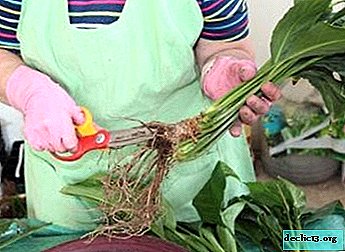 Transfer. Anthurium does not like stagnant water, so the drainage layer should occupy the fourth part of the pot. Land in a new pot needs to be poured half. Then the plant must be pulled out of the old pot, trimmed rotten and damaged roots.
Transfer. Anthurium does not like stagnant water, so the drainage layer should occupy the fourth part of the pot. Land in a new pot needs to be poured half. Then the plant must be pulled out of the old pot, trimmed rotten and damaged roots.After the flower is transferred to a new flowerpot, you need to carefully correct the roots, cover it with earth, crushing a little. The root neck should be at ground level. If deepened, it can rot. Then pour over, overlay with sphagnum moss, put on a transparent bag on top. Put the pot on the penumbra for 2-3 days. After rooting, remove the package and transfer the anthurium to the place where the diffused sunlight enters.
- Wintering. In order for the flower to bloom well in the warmer months, it must be placed in a well-lit place for the winter. If he does not have enough light, he will turn yellow.
Breeding
You can multiply Anthurium red:
- cuttings;
- by seeds;
- division;
- shoots.
It is very difficult to propagate the flower by seeds, the easiest way is to divide. In the spring, several shoots are carefully separated with a sharp knife along with the roots, not forgetting to treat the cut site with crushed coal. Then they are planted in another pot. For the method of cuttings, the top of the stem is cut off, which then takes root in the water, but you can immediately plant it in a pot. The roots appear quickly.
Diseases and Pests
Anthurium red may get sick:
- gray rot;
- Septoria;
- root rot.
Anthracnose is considered the most destructive disease.. A flower can affect:
- aphid;
- scale shield;
- thrips.
Similar houseplants
 Calla and Spathiphyllum are very similar to anthurium red, during which beautiful green leaves turn white during flowering. The modest tender spathiphyllum and its picturesque antipode anthurium look great together.
Calla and Spathiphyllum are very similar to anthurium red, during which beautiful green leaves turn white during flowering. The modest tender spathiphyllum and its picturesque antipode anthurium look great together.
Anthurium Amaretti has a white inflorescence with red spots. Different colors are connected in the bedspread:
- red;
- green;
- Orange;
- yellow.
The compact Anthurium Andrianum Edison has wide, saturated green, heart-shaped leaves. It has tall peduncles that rise above the bush. A rounded leathery blanket surrounds a yellow or white ear.
Low Anthurium Nano Red forms a sprawling bush with small growth points. It has pointed dark green leaves. Peduncle straight, towering above the bush. The vertical cob has a reddish-orange hue. The color of the small heart-shaped bedspread ranges from reddish green to crimson.
Useful video
Further, an informative video about the care of anthurium:
Anthurium red belongs to the favorite flowers of florists. He is valued for his ability to persist in a cut of 21-30 days. This indoor flower makes the atmosphere in the house cleaner. Its dense leaves absorb harmful substances. The high humidity, which is necessary for the plant, also benefits.

 artist's palette;
artist's palette; Transfer. Anthurium does not like stagnant water, so the drainage layer should occupy the fourth part of the pot. Land in a new pot needs to be poured half. Then the plant must be pulled out of the old pot, trimmed rotten and damaged roots.
Transfer. Anthurium does not like stagnant water, so the drainage layer should occupy the fourth part of the pot. Land in a new pot needs to be poured half. Then the plant must be pulled out of the old pot, trimmed rotten and damaged roots.